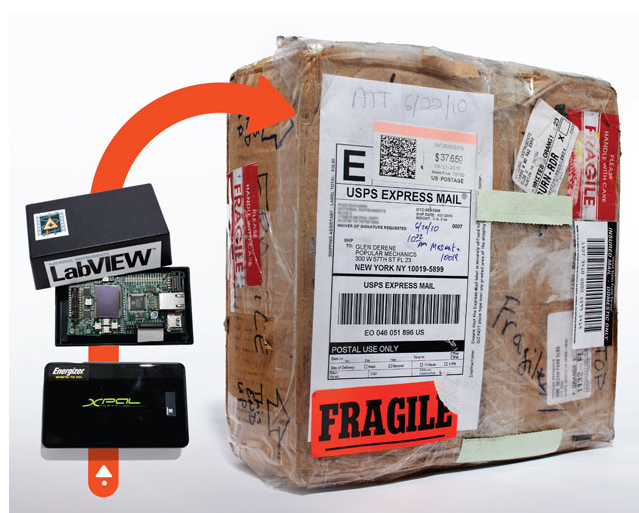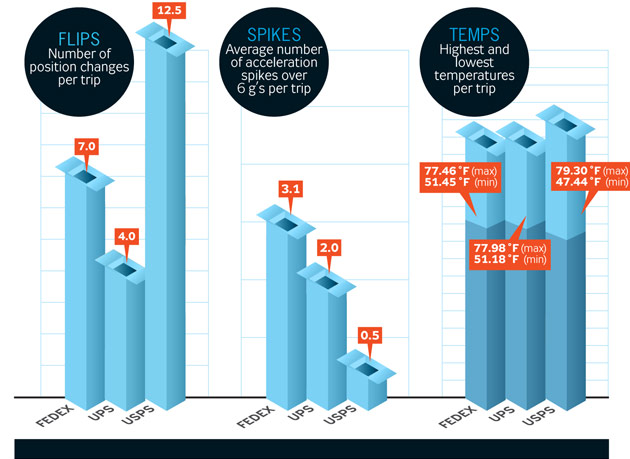
While many of us may wonder and just hope for the best as we ship off our precious cargo in UPS or FedEx, the bright minds at Popular Mechanics just couldn’t let it rest.
Popular Mechanics created a sensor that measures when a box is dropped, jostled, overheated or frozen. Then, they shipped the sensor a dozen times through UPS, Fed-Ex and USPS to test which service is easiest on your packages.
Working with National Instruments, an industrial test and measurement company, Popular Mechanics created a data-logging device capable of gauging and recording vibration, temperature and orientation.
Popular Mechanics editor Glenn Derene sent the package on a tour of the United States, starting and ending at Popular Mechanics’s office in New York City, with stops in California and Austin, TX. In Santa Monica, California, Popular Mechanics employees uploaded the sensor’s data from a micro SD card, recharged the battery and sent the package on its way.
The parcel was shipped on a dozen more times, in what Derene describes as a modest experiment to see how the device performed and to gather enough data to draw broad conclusions. Their targets—FedEx, UPS and the U.S. Postal Service—were unaware of the test. Derene also tested whether overnight shipping was more or less violent than three-day and if marking the package “Fragile” or “This Side Up” ensured more careful treatment.
The Results: After crunching the data, Popular Mechanics found that “the USPS has the gentlest touch, with a per-trip average of 0.5 acceleration spikes over 6 g’s. FedEx and UPS logged an average of three and two big drops per trip, respectively.” USPS flipped over its Express Mail packages quite a bit, about 12.5 position changes per trip. Meanwhile, FedEx averaged seven position changes, and four for UPS. Popular Mechanics also found that “FedEx delivered the most big bumps, with an average of three acceleration spikes over 6 g’s (equivalent to a 2.5-foot drop) per trip. The USPS was the gentlest yet also the most active handler, with an average 12.5 position changes per trip. UPS was tops at keeping our package upright.” Disturbingly, Popular Mechanics learned that their package marked “Fragile” or “This Side Up” received more abuse than the rest. See graph below.
Get the TNW newsletter
Get the most important tech news in your inbox each week.






